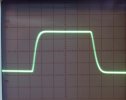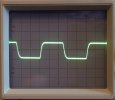Radford Revival
Member
- Joined
- Sep 7, 2023
- Messages
- 11
- Likes
- 31
Hello all!
I am fully aware that most here are not the target audience for valve amplifiers, which is of course completely sensible. However I have seen some interest in the topic, no doubt they have a certain mystique.
Because I am mad, I have developed a valve design that I think measures quite well and I think people might be interested to at least see the results of what can be achieved. I am not trying to push a product or sell anything, this is purely for interest's sake.
Strictly speaking, this is actually a hybrid amplifier, but the hard way around: The output stage is tubes with a traditional push pull pair of KT88s in class AB, and the driver stage is solid state. This is for practical reasons, and you could get close to the same distortion levels with a valve driver stage - I won't bore too much with the reasoning behind this - basically it just makes things easier and less finicky.
This first measurement is the amplifier idling. Bear in mind that there is a fully conventional, open frame EI cored mains transformer on a mild steel chassis. Not only that, the output transformer is mounted in the vicinity, which adds to the handicap. The magnetic field from the mains transformer directly couples to the output. Despite this, the hum residual with the amp warmed up is around 15uV RMS, which for such a crude device is not too bad! Substantially low order components too, and no spray of rectifier hash. The noise levels are extremely low too.

Here is the THD at 1W into 8 ohms. I think some of the grass at non-harmonic intervals is measurement related. The low noise levels are unflattering here!

Upping the power makes the spectrum busier - here is 35VPk into 8 ohms. Much of the rubbish is 120dB down thankfully. Bear in mind this is a single pair of KT88s running in Class-AB. Most of the harmonics are around 100dB down apart from the 3rd.

Distortion remains decent at 3Khz at 30VPk

Here is a low power 19+20Khz IMD test at 8Vpk. Gets a bit busier at higher powers but keeps respectable until clipping.

What is actually quite interesting and took me by surprise is how well this thing does on a multitone test. This is with the multitone waveform (which looks a lot like noise on the scope), running at full scale, nearly 40VPk, not some small fraction of the amplifier's power:

Some other numbers, the output impedance is 0.035 Ohms at low to middle frequencies, so just as good damping factor (and often somewhat better) as many solid state designs Power output is around 100W depending on the tubes and line voltage (good power delivery into impedances lower than nominal if KT150s are used too!)
Pointless to make it this linear? Quite possibly! But certainly neat. Happy to answer any questions about this or other valve amplifiers in general should anyone ask (or other types!)

I am fully aware that most here are not the target audience for valve amplifiers, which is of course completely sensible. However I have seen some interest in the topic, no doubt they have a certain mystique.
Because I am mad, I have developed a valve design that I think measures quite well and I think people might be interested to at least see the results of what can be achieved. I am not trying to push a product or sell anything, this is purely for interest's sake.
Strictly speaking, this is actually a hybrid amplifier, but the hard way around: The output stage is tubes with a traditional push pull pair of KT88s in class AB, and the driver stage is solid state. This is for practical reasons, and you could get close to the same distortion levels with a valve driver stage - I won't bore too much with the reasoning behind this - basically it just makes things easier and less finicky.
This first measurement is the amplifier idling. Bear in mind that there is a fully conventional, open frame EI cored mains transformer on a mild steel chassis. Not only that, the output transformer is mounted in the vicinity, which adds to the handicap. The magnetic field from the mains transformer directly couples to the output. Despite this, the hum residual with the amp warmed up is around 15uV RMS, which for such a crude device is not too bad! Substantially low order components too, and no spray of rectifier hash. The noise levels are extremely low too.
Here is the THD at 1W into 8 ohms. I think some of the grass at non-harmonic intervals is measurement related. The low noise levels are unflattering here!
Upping the power makes the spectrum busier - here is 35VPk into 8 ohms. Much of the rubbish is 120dB down thankfully. Bear in mind this is a single pair of KT88s running in Class-AB. Most of the harmonics are around 100dB down apart from the 3rd.
Distortion remains decent at 3Khz at 30VPk
Here is a low power 19+20Khz IMD test at 8Vpk. Gets a bit busier at higher powers but keeps respectable until clipping.
What is actually quite interesting and took me by surprise is how well this thing does on a multitone test. This is with the multitone waveform (which looks a lot like noise on the scope), running at full scale, nearly 40VPk, not some small fraction of the amplifier's power:
Some other numbers, the output impedance is 0.035 Ohms at low to middle frequencies, so just as good damping factor (and often somewhat better) as many solid state designs Power output is around 100W depending on the tubes and line voltage (good power delivery into impedances lower than nominal if KT150s are used too!)
Pointless to make it this linear? Quite possibly! But certainly neat. Happy to answer any questions about this or other valve amplifiers in general should anyone ask (or other types!)
Last edited:


